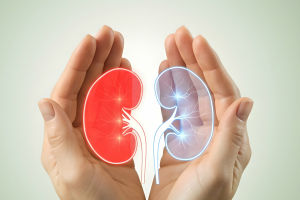Sarcoidosis and Pulmonary
Sarcoidosis is a complex multisystem inflammatory disease characterized by the formation of non-caseating granulomas.
Among its various manifestations, pulmonary involvement is the most frequent and clinically significant, affecting approximately 90% of patients.
The heterogeneity of pulmonary sarcoidosis demands a nuanced understanding of its pathophysiology, clinical presentation, diagnostic challenges, and evolving treatment strategies.
Pathophysiology of Pulmonary Sarcoidosis
The hallmark of sarcoidosis is the accumulation of activated T-helper lymphocytes and macrophages forming granulomas, which serve as a localized immune response to an unidentified antigen. In the lungs, these granulomas disrupt normal tissue architecture, leading to inflammation, fibrosis, and impaired gas exchange.
Recent immunological studies highlight the role of genetic predisposition and environmental triggers, including microbial agents and occupational exposures, in initiating and perpetuating granulomatous inflammation.
Dr. David Moller, a leading pulmonologist, explains, "Pulmonary sarcoidosis represents a dysregulated immune response where granuloma formation is both protective and pathogenic, creating a delicate balance that determines disease progression."
Clinical Presentation and Pulmonary Manifestations
Pulmonary sarcoidosis exhibits a spectrum ranging from asymptomatic radiographic abnormalities to severe respiratory failure. Common symptoms include persistent dry cough, dyspnea on exertion, chest pain, and fatigue. Physical examination may reveal crackles or wheezing, but findings are often subtle.
Radiologically, chest X-rays and high-resolution computed tomography (HRCT) scans reveal characteristic bilateral hilar lymphadenopathy, parenchymal infiltrates, and fibrosis in advanced cases. The Scadding staging system remains a useful tool for categorizing disease severity based on chest radiographic patterns, guiding prognosis and management.
Diagnostic Challenges and Advances
Confirming pulmonary sarcoidosis requires a combination of clinical, radiologic, and histopathologic evidence. Tissue biopsy demonstrating non-caseating granulomas is essential to exclude other granulomatous diseases such as tuberculosis or fungal infections.
Emerging diagnostic modalities have enhanced detection and monitoring. Positron emission tomography (PET) scanning using fluorodeoxyglucose (FDG) identifies active inflammatory sites, aiding in biopsy targeting and assessing treatment response.
Additionally, serum biomarkers like soluble interleukin-2 receptor (sIL-2R) and chitotriosidase have shown promise in reflecting disease activity, though their routine clinical use requires further validation.
Therapeutic Approaches and Management
Management of pulmonary sarcoidosis is tailored to disease severity and symptom burden. Many patients experience spontaneous remission and require only observation. However, those with significant respiratory compromise or progressive fibrosis necessitate pharmacologic intervention.
Corticosteroids remain the first-line therapy, effectively reducing granulomatous inflammation. Nevertheless, long-term steroid use is limited by adverse effects, prompting the use of steroid-sparing agents such as methotrexate, azathioprine, or mycophenolate mofetil. Recent clinical trials have explored biologics targeting tumor necrosis factor-alpha (TNF-α), with infliximab demonstrating efficacy in refractory cases.
Prognosis and Long-Term Outcomes
Pulmonary sarcoidosis prognosis varies widely. While many patients achieve remission within a few years, approximately 10-20% develop chronic disease with progressive lung fibrosis, leading to respiratory failure. Pulmonary hypertension and cor pulmonale are serious complications associated with increased mortality.
Regular pulmonary function testing and imaging are critical for monitoring disease progression. Multidisciplinary care involving pulmonologists, radiologists, and rheumatologists optimizes patient outcomes.
Pulmonary involvement in sarcoidosis presents a multifaceted clinical challenge, blending immunologic complexity with variable clinical courses. Advances in diagnostic imaging, biomarker research, and targeted therapies are reshaping management paradigms. Continued research is essential to unravel the disease's etiology and to develop personalized treatments that improve quality of life and survival for affected individuals.
-
 Sarcoidosis and PulmonarySarcoidosis And Pulmonary Involvement?! What's Really Happening Inside The Lungs—And Why?!
Sarcoidosis and PulmonarySarcoidosis And Pulmonary Involvement?! What's Really Happening Inside The Lungs—And Why?! -
 Aching Joints Steal YouthJuvenile Idiopathic Arthritis?! Why Are Young Joints Acting Old—And What Can Be Done About It?!
Aching Joints Steal YouthJuvenile Idiopathic Arthritis?! Why Are Young Joints Acting Old—And What Can Be Done About It?! -
 The Infection Strikes Again?Beat It Before—But It's Back?! What Makes Some Infections Return Even More Aggressive?
The Infection Strikes Again?Beat It Before—But It's Back?! What Makes Some Infections Return Even More Aggressive?
Contact to : xyjph123@gmail.com
Privacy Agreement
Copyright © boyuanhulian 2020 - 2022. All Right Reserved.
Privacy Agreement
Copyright © boyuanhulian 2020 - 2022. All Right Reserved.